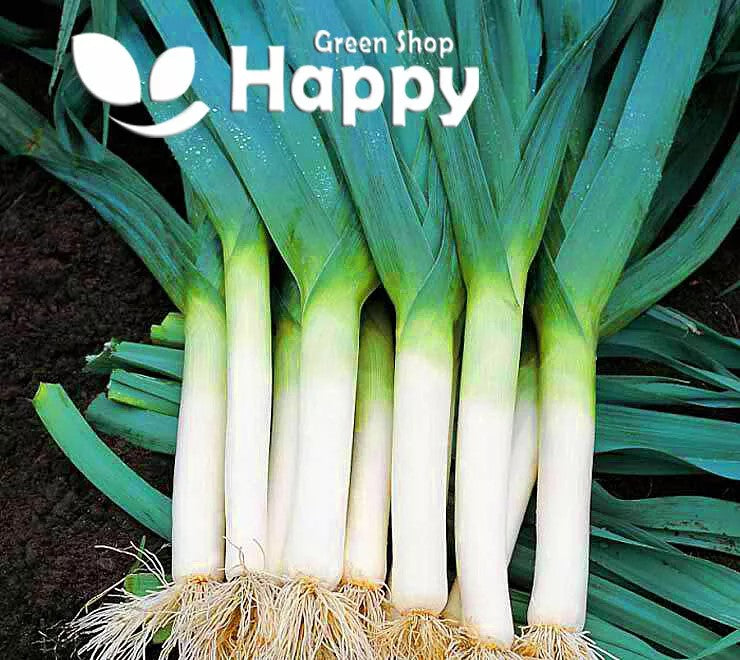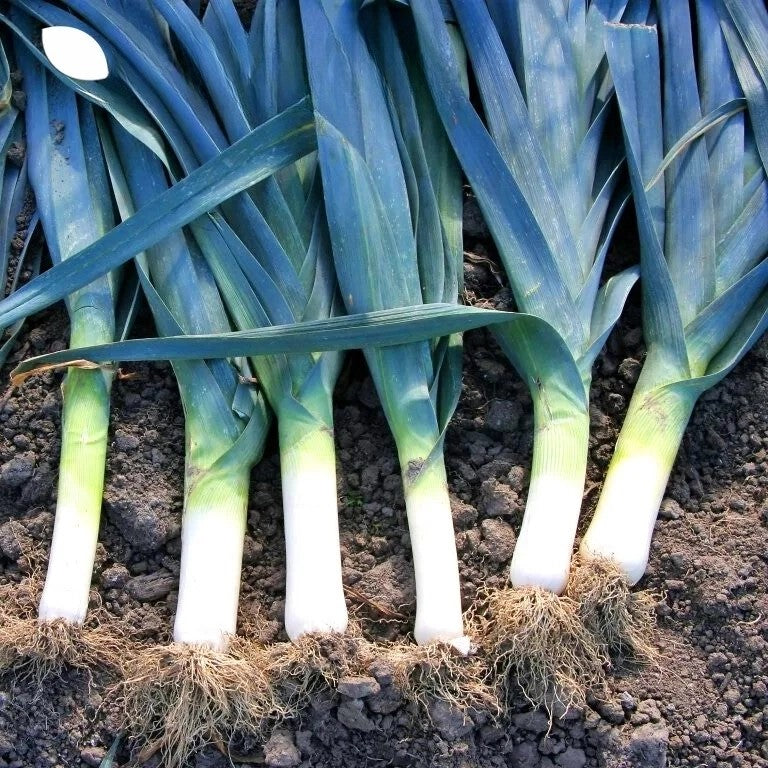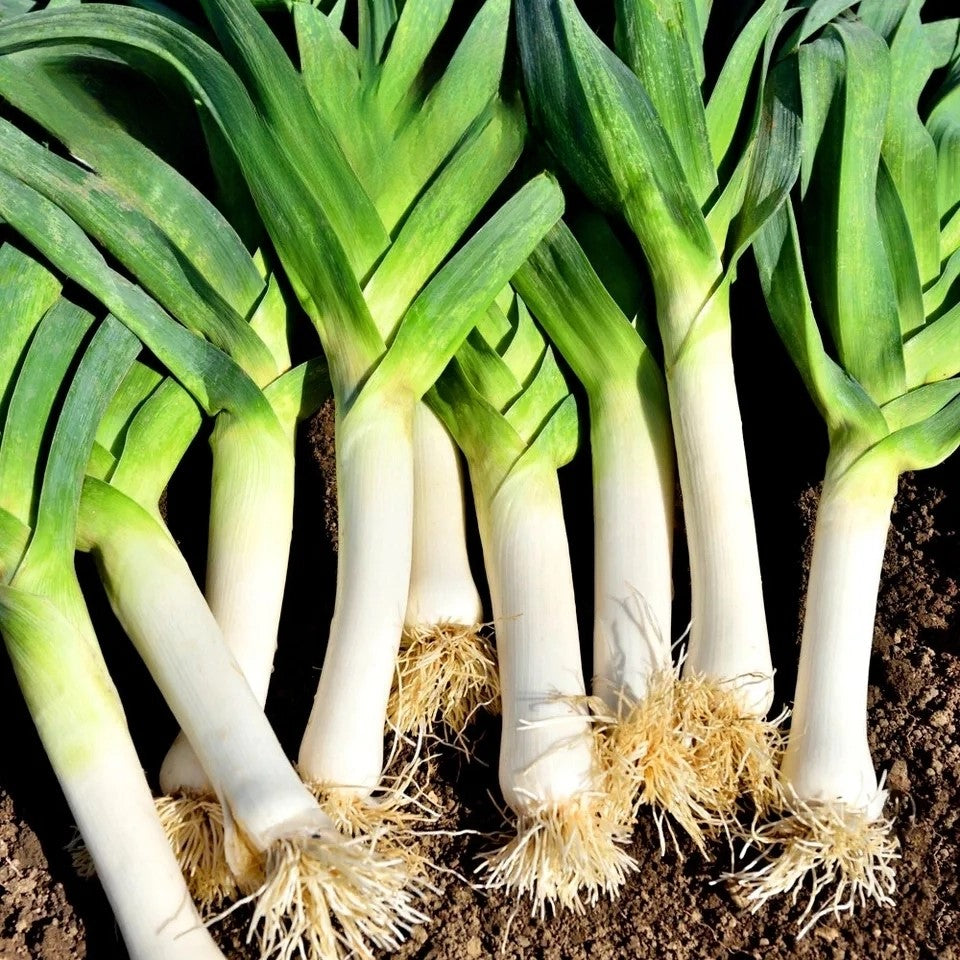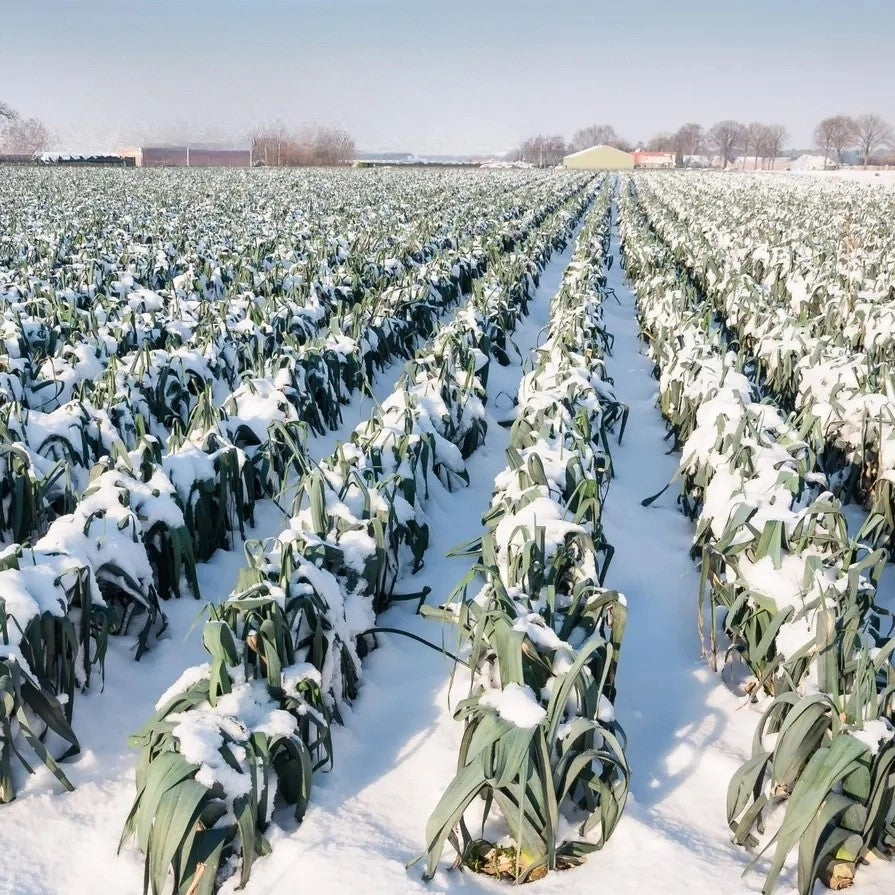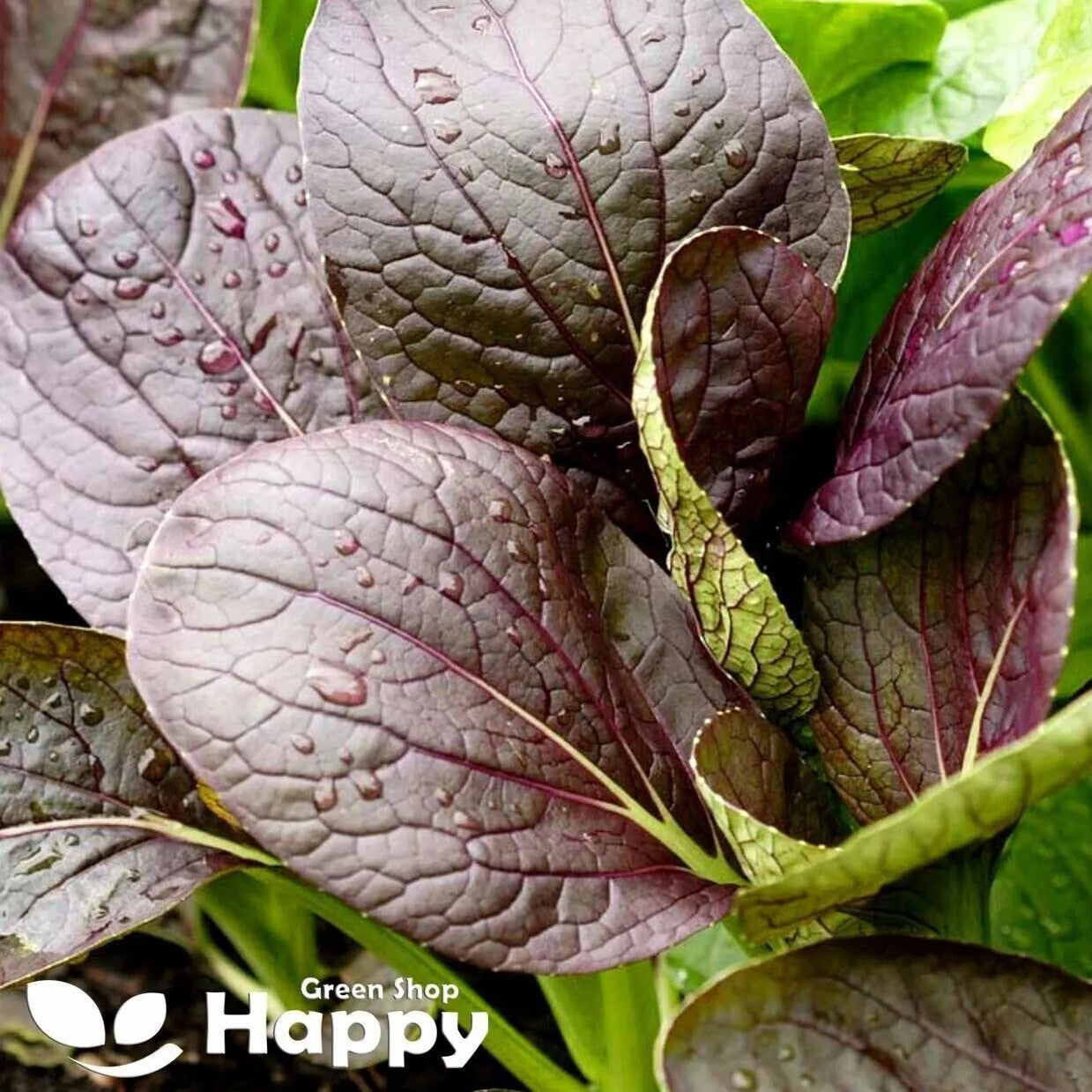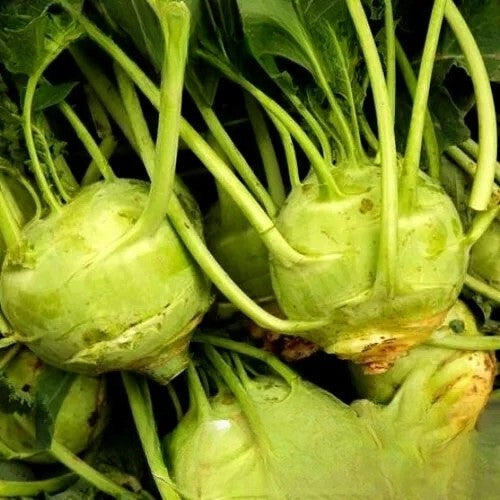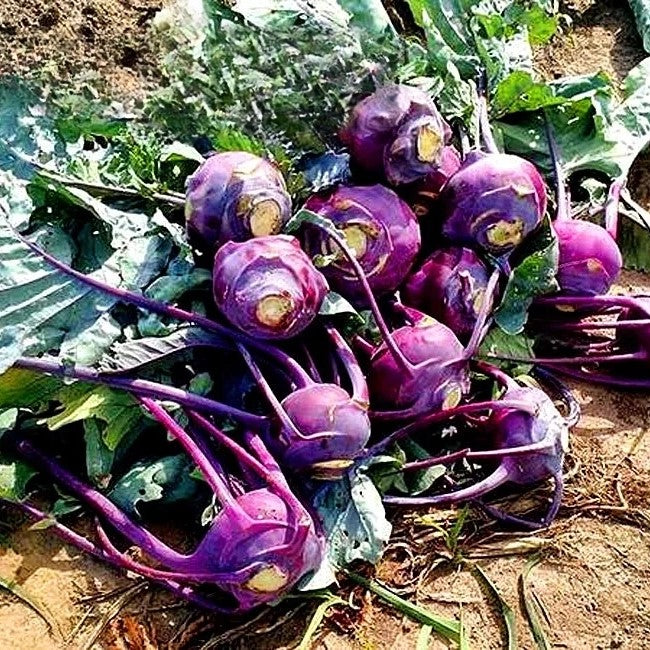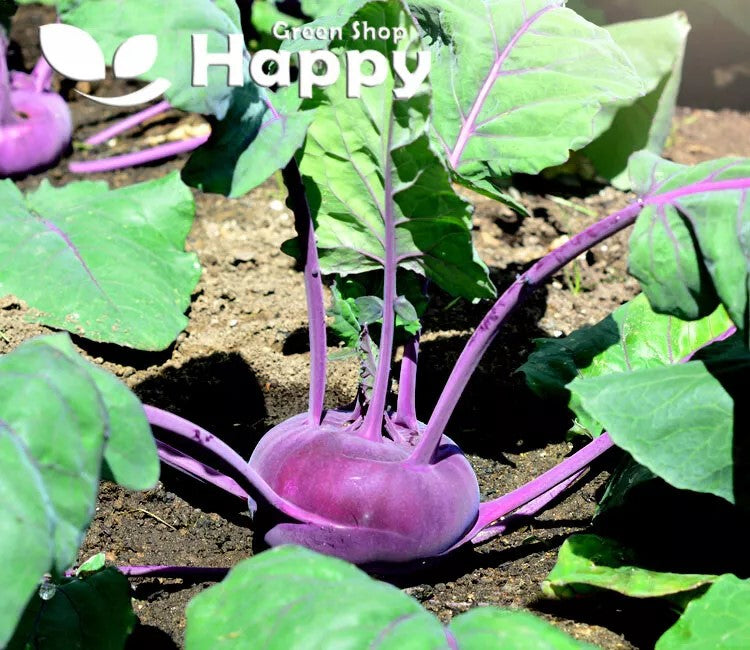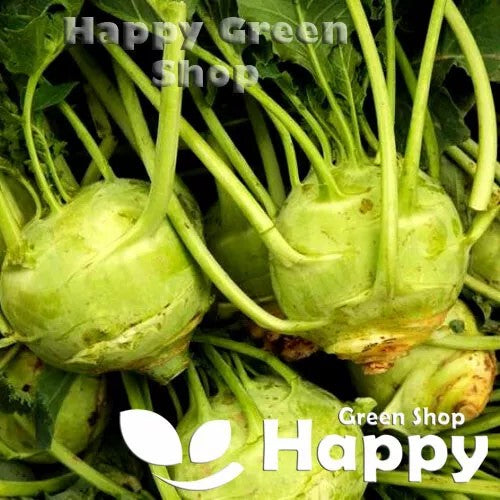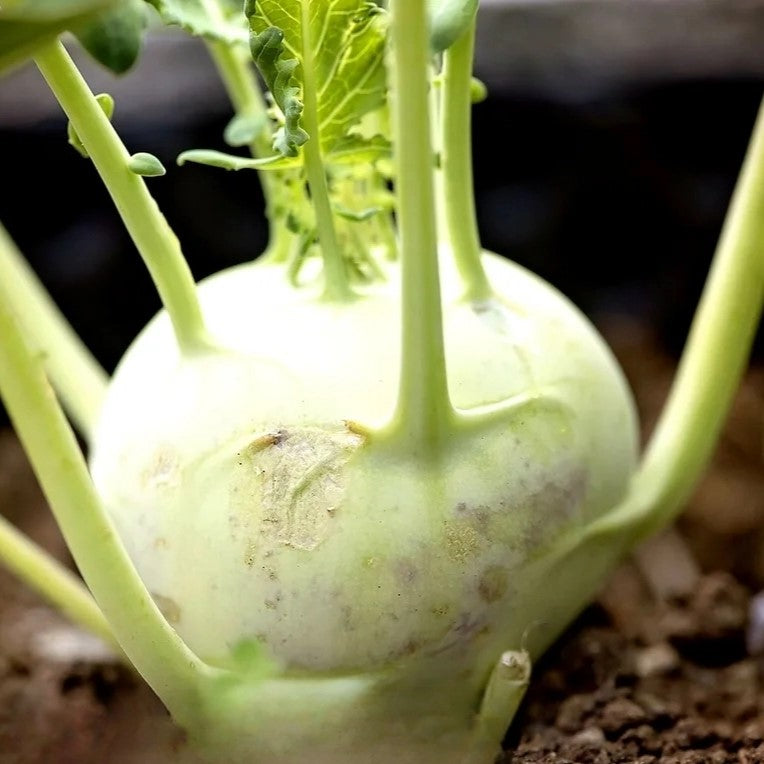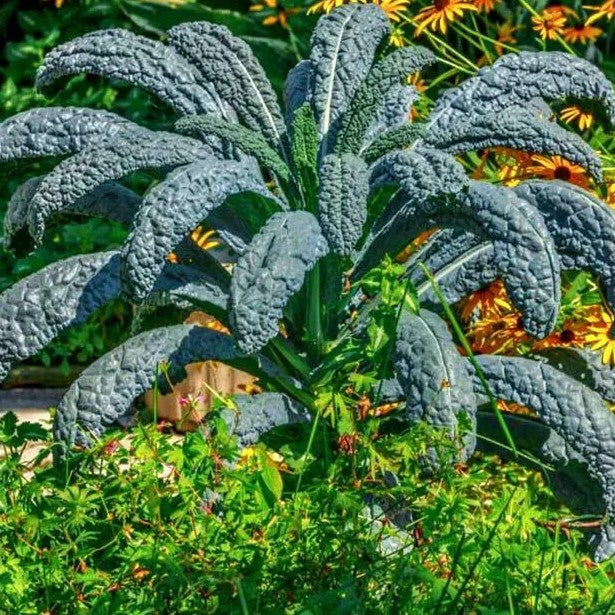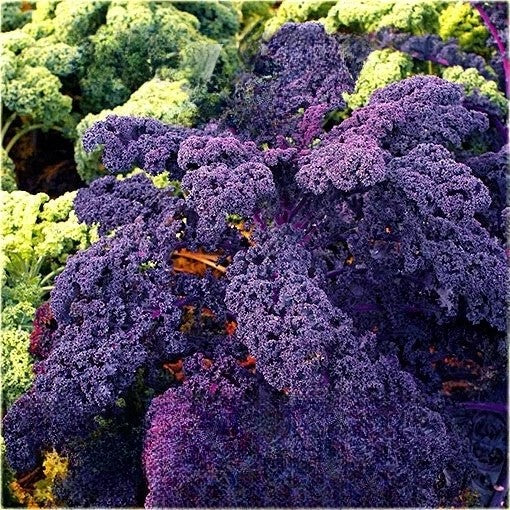Sort by:
97 products
97 products
Leek ‘Titus’ – 800 Seeds (Allium porrum)
Description:
Grow tender, flavorful leeks with Leek ‘Titus’ (Allium porrum). This hardy variety produces long, thick, light-green stems with a mild onion-like flavor, ideal for soups, stews, and roasting. ‘Titus’ is resistant to bolting and can be sown early for spring or autumn harvests. Perfect for kitchen gardens, raised beds, or allotments, it’s an easy-to-grow variety suitable for both home gardeners and small-scale growers.
Key Features
-
Long, thick, mild-flavored stems
-
Hardy variety resistant to bolting
-
Suitable for early spring and autumn harvest
-
Ideal for culinary use: soups, stews, roasting
-
Easy to grow from seed
Ideal For
-
Kitchen gardens and allotments
-
Raised beds and vegetable borders
-
Culinary use in soups, stews, and roasted dishes
-
Home gardeners seeking reliable leek harvests
Sowing & Growing
-
Sow Indoors: January–March
-
Transplant Outdoors: March–May
-
Germination: 10–14 days at 15–20°C
-
Spacing: 10–15 cm apart in rows 30–40 cm apart
-
Height: 40–50 cm
-
Light: Full sun
-
Soil: Fertile, well-drained, rich in organic matter
Care Tips
-
Water regularly, especially during dry periods
-
Hill soil around stems to blanch and promote tender growth
-
Fertilize lightly with balanced fertilizer during growth
-
Harvest when stems reach desired thickness
Leek 'Bulgarian Giant' – Seeds (Allium porrum)
Grow impressively large leeks with 'Bulgarian Giant', a heritage variety renowned for its thick, long white stems and tender green leaves. Ideal for soups, stews, and roasting, this hardy leek is slow to bolt and produces a reliable, high-yielding crop for home gardens and allotments. Perfect for gardeners seeking substantial, flavorful leeks throughout the season.
How to Grow
. Sow indoors: February – March, 1–2 cm deep in trays or seedbeds
. Transplant outdoors: April – June, spacing 15–20 cm apart in rows 30 cm apart
. Prefers fertile, well-drained soil with full sun
. Water consistently to encourage long, tender stems
. Harvest: Late summer to winter depending on planting date
Key Features
. Heritage leek variety producing thick, long stems
. Tender and flavorful for cooking
. High-yielding and hardy
. Slow to bolt for extended harvest
. Ideal for soups, stews, roasting, and braising
Ideal For
. Home gardens and allotments
. Culinary use in hearty dishes and soups
. Long-term harvesting from summer into winter
. Gardeners seeking classic, productive leek varieties
Sowing & Harvest
. Sow: February – March
. Transplant: April – June
. Harvest: August – December
Quick Tip
For extra-long stems, blanch leeks by mounding soil around the base as they grow.
Large Leek 'Monstruoso di Carentan 2' – Seeds (Allium porrum)
Grow impressively large leeks with 'Monstruoso di Carentan 2', a classic heirloom variety prized for its thick, long white stems and robust flavor. Ideal for soups, stews, roasting, and braising, this hardy leek is slow to bolt and provides a high-yield, long-lasting harvest. Perfect for home gardens and allotments, it’s a favorite for gardeners seeking substantial, gourmet leeks.
How to Grow
. Sow indoors: February – March, 1–2 cm deep in trays or seedbeds
. Transplant outdoors: April – June, spacing 15–20 cm apart in rows 30 cm apart
. Prefers fertile, well-drained soil with full sun
. Keep soil consistently moist for long, tender stems
. Harvest: Late summer to winter depending on planting date
Key Features
. Heirloom leek variety with thick, long stems
. Tender and flavorful for a wide range of culinary uses
. High-yielding and hardy
. Slow to bolt for extended harvest
. Ideal for soups, stews, roasting, and braising
Ideal For
. Home gardens and allotments
. Culinary use in hearty dishes
. Long-term harvesting from summer into winter
. Gardeners seeking large, classic leek varieties
Sowing & Harvest
. Sow: February – March
. Transplant: April – June
. Harvest: August – December
Quick Tip
For extra-long stems, blanch leeks by mounding soil around the base as they grow.
Komatsuna Red Spinach Seeds (Periviridis)
Bring bold color and exceptional nutrition to your garden with Komatsuna Red Spinach, also known as Japanese mustard spinach. This hardy leafy green features striking red-purple leaves with a mild, slightly mustardy flavor. A versatile and fast-growing crop, it thrives in both cool and warm conditions, making it perfect for year-round sowing. Delicious in salads, stir-fries, and soups, it’s a nutrient-packed choice for any kitchen garden.
How to Grow
-
Sow directly outdoors from spring to autumn or under cover in winter.
-
Prefers fertile, well-drained soil in full sun or partial shade.
-
Sow seeds thinly 1 cm deep in rows 30 cm apart.
-
Thin seedlings to 15–20 cm spacing for full-sized plants.
-
Harvest young leaves in 25–30 days or mature leaves in 40–50 days.
Key Features
-
Fast-growing, cut-and-come-again leafy green
-
Beautiful red-purple leaves with mild mustard flavor
-
High in vitamins A, C, and calcium
-
Tolerates both heat and cold for extended cropping
-
Suitable for salads, stir-fries, soups, and juicing
Ideal For
-
Year-round vegetable growing
-
Nutrient-rich kitchen gardens
-
Gardeners who enjoy fast, repeat harvests
-
Adding color and flavor to fresh dishes
Sowing
-
Best time: March to October (under cover for winter)
-
Depth: 1 cm
-
Spacing: 15–20 cm between plants
-
Position: Full sun or partial shade
-
Harvest: From 25 days after sowing
Quick Tip
-
Pick leaves regularly to encourage new growth and enjoy tender, flavorful harvests throughout the season.
Kohlrabi 'Luna' – Seeds (Brassica oleracea var.)
Kohlrabi 'Luna' is a high-quality, light green variety known for its tender, juicy, and mild-flavored bulbs. Its smooth skin and crisp white flesh make it perfect for eating raw in salads, grating into slaws, or cooking in soups, stir-fries, and roasts.
This early-maturing, uniform variety is resistant to cracking and lignification, making it an excellent and reliable choice for home gardeners and allotments. Compact plants are well-suited to smaller spaces and can be grown in open ground or large containers.
How to Grow
-
Sow indoors/outdoors: March – July
-
Depth: 1 cm
-
Spacing: 20–25 cm between plants, 30 cm between rows
-
Position: Full sun or partial shade
-
Soil: Fertile, moist, well-drained soil
-
Watering: Keep soil evenly moist for best flavor and texture
Key Features
-
Smooth, light green bulbs with crisp, mild white flesh
-
Early-maturing, uniform, and resistant to cracking
-
Excellent raw or cooked – versatile in the kitchen
-
Suitable for gardens, raised beds, or large containers
-
Reliable harvest with tender bulbs full of flavor
Harvest
-
Harvesting period: May – October
-
Pick when bulbs reach 6–10 cm in diameter for best taste and tenderness.
Short Tip
For a continuous supply, sow little and often every 2–3 weeks during the growing season.
Kohlrabi 'Violeta' – Seeds (Brassica oleracea)
Kohlrabi 'Violeta' is a striking purple-skinned variety with crisp, white flesh and a sweet, nutty taste. Its unique color and mild flavor make it an excellent addition to both the garden and the kitchen. Perfect eaten raw in salads, grated into slaws, or lightly cooked in stir-fries, soups, and roasts.
This fast-growing crop is hardy, reliable, and suitable for multiple sowings throughout the season. Compact plants make it an ideal choice for small gardens, raised beds, or containers.
How to Grow
-
Sow indoors/outdoors: March – July
-
Depth: 1 cm
-
Spacing: 20–25 cm between plants, 30 cm between rows
-
Position: Full sun or partial shade
-
Soil: Moist, fertile, well-drained soil
-
Watering: Keep soil evenly moist to prevent woodiness and splitting
Key Features
-
Vibrant purple variety with sweet, crisp white flesh
-
Delicious raw or cooked – versatile in salads, stir-fries, and roasts
-
Fast-growing and suitable for repeat sowings
-
Compact plants – ideal for small gardens and containers
-
Attractive crop with ornamental value in the vegetable patch
Harvest
-
Harvesting period: May – October
-
Pick when bulbs reach 5–8 cm in diameter for the best flavor and texture.
Short Tip
For tender bulbs, avoid letting plants become oversized – harvest regularly.
Kohl rabi 'Giant' – Seeds (Brassica oleracea)
The Kohl rabi 'Giant' is a vigorous, late-maturing variety producing extra-large, tender bulbs that can reach impressive sizes without becoming woody. Its crisp, white flesh has a mild, sweet flavor, perfect for salads, steaming, stir-fries, or roasting.
This variety is highly productive and stores well, making it a reliable choice for home growers who want both quality and yield.
How to Grow
-
Sow outdoors: April – July, thinly in rows 1 cm deep
-
Thin seedlings: 20–25 cm apart when large enough
-
Soil: Fertile, well-drained, moisture-retentive
-
Care: Keep well-watered to avoid woody texture
-
Position: Full sun
Key Features
-
Extra-large, tender bulbs
-
Mild, sweet taste
-
Stores well after harvest
-
Easy to grow and high-yielding
-
Great for salads, soups, and cooking
Sowing & Harvest
-
Sow: April – July
-
Harvest: July – November
Kale Borecole 'Black Tuscan' – Seeds (Nero di Toscana)
Kale Borecole 'Black Tuscan' is a striking, dark-green to almost black leafy kale with deeply wrinkled leaves and a rich, earthy flavor. Also known as Nero di Toscana, this traditional Italian kale is perfect for soups, sautés, salads, and healthy smoothies.
Its hardy, frost-tolerant nature makes it ideal for cool-season gardening, and its dramatic foliage adds both culinary and ornamental value to vegetable beds.
How to Grow
-
Sow indoors: February – April
-
Sow outdoors: March – May
-
Plant spacing: 30–40 cm between plants
-
Position: Full sun to partial shade
-
Soil: Fertile, well-drained soil enriched with compost
-
Care: Water consistently; mulch to retain moisture; remove yellowing leaves to encourage growth
Key Features
-
Deep green, wrinkled leaves with rich, earthy flavor
-
Frost-hardy and suitable for cool-season growing
-
Perfect for soups, sautés, salads, and smoothies
-
Ornamental and culinary value in vegetable gardens
-
High-yielding and easy to cultivate
Harvest
-
Harvesting period: 60–90 days after sowing
-
Pick outer leaves regularly for continuous harvest; leaves improve in flavor after light frost.
Short Tip
Harvest leaves from the bottom up and after a light frost for the sweetest, most tender flavor.
Kale 'Scarlet' – Seeds (Brassica oleracea)
The Kale 'Scarlet' is a stunning ornamental and culinary variety, prized for its deeply curled, frilly leaves that turn a rich purple-red as temperatures drop. This hardy kale is packed with vitamins and minerals, offering a sweet, mild flavor that improves after the first frosts.
Beautiful in the garden and nutritious in the kitchen, it’s perfect for salads, smoothies, sautés, and winter soups.
How to Grow
-
Sow indoors: March – May
-
Sow outdoors: April – June
-
Transplant/Thin: 40–50 cm apart
-
Soil: Fertile, well-drained, moisture-retentive
-
Position: Full sun or partial shade
-
Care: Water regularly and protect young plants from pests
Key Features
-
Striking deep-red, frilly leaves
-
Sweet flavor enhanced by frost
-
Very hardy, withstands winter cold
-
Rich in vitamins A, C, and K
-
Dual-purpose: ornamental and edible
Sowing & Harvest
-
Sow: March – June
-
Harvest: October – March
Showing 63/97

